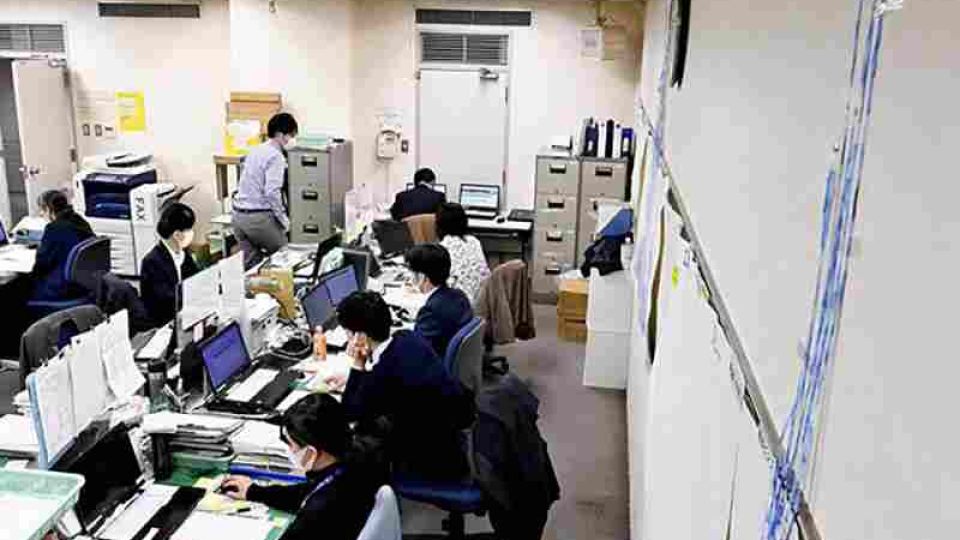April 7, 2022
TOKYO – The unprecedented speed of the spread of the novel coronavirus is severely straining operations at public health centers — the front line of infection control.
At a public health center office in Shinagawa Ward, Tokyo, on Thursday afternoon, a bar graph showing the daily number of infections was too big to fit on the wall, and had to be extended onto the ceiling. Early this month, the ward’s daily tally stood at fewer than 10, but on Tuesday, this figure had reached a record high of more than 300.
“We’re way past talking about figures merely doubling,” said Migiko Takanohashi, the manager of the center’s public health and prevention section.
As of Thursday morning, about 1,500 infected individuals were recuperating at home — a roughly fivefold increase from about 300 on Jan. 12.
The government requires center staff to contact people no later than the day after they are informed of having returned a positive test result. In some cases, however, this has taken longer. On Wednesday night, center officials visited the homes of about five infected individuals who could not be contacted remotely. “There’s no way to make sure we’ve contacted everyone who’s infected,” Takanohashi said.
On Wednesday, it became difficult to access the HER-SYS system that manages information about people infected with the novel coronavirus and the center received a large numbers of inquiries from medical institutions.
Even though public health centers bolstered preparations for the “sixth wave,” they are starting to buckle under the pressures caused by the omicron variant’s rapid spread.

